David Stockman On The Ukrainian Border War Folly
Authored by David Stockman via InternationalMan.com,
Someone should tell the European ruling elites to take a long jump off a short pier.
Their endless whining about the Ruuskies and Putin is just plain pathetic because...
-
It’s not justified—Russia bears no hallmarks of an expansionist imperial power.
-
The Russia-Ukraine conflict is none of western Europe’s business—since its essentially a territorial and civil war within the borders of historic Russia.
-
If EU officialdom is really concerned about the purported Russian threat why do they spend just a pittance of their GDP on defense?
Yet, here we have Ursula von der Leyen, president of the European Commission, former German defense minister and full-throated war-hawk, talking absolute nonsense:
“Russian President Vladimir Putin wants to see empires and autocracies back in Europe, European Commission President Ursula von der Leyen told the European Economic Congress in Katowice.
Speaking alongside Polish Prime Minister Donald Tusk, von der Leyen insisted that she stands for a European Union that is ready to do whatever it takes to protect Europe, and especially Ukraine.
“Putin’s war is about redrawing the map of Europe, but it is also a war on our Union and on the entire global rules-based system,” she said.”
Well, that’s rubbish if there ever was such. The only time the borders of Ukraine have been redrawn at the barrel of a gun is when Lenin, Stalin and Khrushchev did it between 1922 and 1954. That’s right, this bureaucratic half-wit wants to embroil the world in WWIII in order to enforce borders drawn by a trio if history’s most blood-thirsty tyrants.
As explained below, there never was a country even remotely resembling modern Ukraine until the Soviet communists decreed its existence. Before that, the pieces and parts of the country’s history go back to the 1650s when one of the more powerful and brutal rulers of the Cossack Hetmanate that occupied a small part of today’s central Ukraine abandoned his tribe’s historic fealty to the Polish kings and switched his loyalty to the Russians. After that, the “borderlands”( i.e.”Ukraine” in Russian) were all about vassalage in the Russian Empire and the Soviet one which followed.
During that 375 year span the borders shifted all over the lot and back, as the Mongol, Turkish and Polish-Lithuanian empires receded and the Russian and communist ones expanded. So what’s so sacrosanct about the very last version of the map—one that hosted both the murderous regime of Stalin and Hitler’s Wehrmacht, too?
Indeed, Europe is rife with borders redrawn again and again. While von der Leyen was in Poland preaching for border wars in Ukraine, in fact, it might well be asked, which sacrosanct Polish borders did she have in mind?
For 700 years “Poland” has cavorted around the rivers, plains and forests of central Europe like a traveling minstrel show. This includes its disappearance entirely at the hands of the Prussians, Russians, Hapsburgs and other long-gone lesser powers during the later years of the 18th century and the entirety of the 19th century. Only in 1919 was it resurrected—in part upon German lands at Versailles because Woodrow Wilson realized that there were votes to be had among the fair part of the Polish nation which had migrated to Chicago and the industrial Midwest.
Then Hitler and Stalin redrew Poland’s borders again under the infamous Molotov-Ribbentrop pact of 1938, cancelling Wilson handwork and returning the German Danzig Corridor to its previous owner. And then, seven years later, a different set of victors re-carved it again at Yalta, setting borders for “Poland” that satisfied Stalin’s aim to recover eastern lands the Soviets lost in the post-1918 civil war.
That is to say, the picture below reminds not only how the latest borders of “Poland” were drawn, but how over the last several centuries of history most of Europe’s present borders came to be. They were not drawn by God’s deputies on earth or even the statesman of the day—but by the victors of the most recent wars.
The Border Men of 1945
Moreover, even a glance at today’s map reminds that the border-drawing work of victorious generals and politicians, and occasionally statesman, has always been subject to revision without necessarily making a war about it. In recent times that’s been true even for the handiwork of the better kind of draftsmen who drew maps at Versailles as opposed to the bloody chambers of the Soviet Empire.
Thus, the statesman at Versailles decreed the existence of Czechoslovakia in 1919 as a potpourri of nations including a lot of Slovaks, Czechs, Hungarians, Romani people, Silesians, Ruthenians, Ukrainians, Poles, Jews and most especially millions of Germans. So it was subsequently dismembered by Hitler to bring the Sudetenland Germans home; then re-assembled by the Yalta winners; and finally divided between Slovakia and the Czech Republic on peaceable terms in 1993.
Or take the case of the meandering borders of the six autonomous republics of the vanished state of Yugoslavia and particularly its anchor in Serbia. Wikipedia explains the border-making process there as well as can be done:
“(Serbia) achieved de facto independence in 1867 and gained full recognition by the Great Powers in the Berlin Congress of 1878. As a victor in the Balkan Wars of 1912–1913, Serbia regained Vardar Macedonia, Kosovo and Metohija and Raška (Old Serbia). In late 1918, with the defeat of the Austro-Hungarian empire, Serbia was expanded to include regions of the former Serbian Vojvodina. Serbia was united with other Austro-Hungarian provinces into a pan-Slavic State of Slovenes, Croats and Serbs; the Kingdom of Serbia joined the union on 1 December 1918 and the country was named the Kingdom of Serbs, Croats and Slovenes.
Serbia achieved its current borders at the end of World War II, when it became a federal unit within the Federal People’s Republic of Yugoslavia (proclaimed in November 1945). After the dissolution of Yugoslavia in a series of wars in the 1990s, Serbia once again became an independent state on 5 June 2006, following the breakup of a short-lived union with Montenegro.”
Albeit mention should also be made of the former Serbian province of Kosovo. Washington and its NATO retainers decreed its independence after 75 days of persuasion with the Serbs. The messages were apparently written on the bombs dropped from a range of NATO aircraft that included about everything which could fly:
“A large element of the operation was the air forces of NATO, relying heavily on the US Air Force and Navy using the F-16, F-15, F-117, F-14, F/A-18, EA-6B, B-52, KC-135, KC-10, AWACS, and JSTARS from bases throughout Europe and from aircraft carriers in the region.
The French Navy and Air Force operated the Super Etendard and the Mirage 2000. The Italian Air Force operated with 34 Tornado, 12 F-104, 12 AMX, 2 B-707, the Italian Navy operated with Harrier II. The UK’s Royal Air Force operated the Harrier GR7 and Tornado ground attack jets as well as an array of support aircraft. Belgian, Danish, Dutch, Norwegian, Portuguese and Turkish Air Forces operated F-16s. The Spanish Air Force deployed EF-18s and KC-130s. The Canadian Air Force deployed a total of 18 CF-18s, enabling them to be responsible for 10% of all bombs dropped in the operation.
The fighters were armed with both guided and unguided “dumb” munitions, including the Paveway series of laser-guided bombs.The bombing campaign marked the first time the German Air Force actively attacking targets since World War II.[142]
The US B-2 Spirit stealth bomber saw its first successful combat role in Operation Allied Force, striking from its home base in the contiguous United States.”
At length, the Serbian borders were redrawn!
In the process, its president was captured as a war criminal. When he died prior to his trial in a NATO prison from “natural causes” he undoubtedly did not view this particular border drawing incident as an exercise in the rule of law.
In any event, notwithstanding the historic fluidity of borders, there is no case whatsoever that Russia’s invasion was unprovoked and unrelated to NATO’s own provocations in the region. The details are arrayed below, but the larger issue needs be addressed first. Namely, is there any reason to believe that Russia is an expansionist power looking to gobble up neighbors which were not integral parts of its own historic evolution, as is the case with Ukraine?
The answer is no, and its based on what should be called the double-digit rule. The true expansionary hegemons of modern history have spent huge parts of their GDP on defense because that’s what it takes to support the military infrastructure and logistics required for invasion and occupation of foreign lands.
For instance, here are the figures for military spending by Nazi Germany from 1935–1944 expressed as a percent of GDP. This is what an aggressive hegemon looks like in the ramp-up to war and the actual conduct of military campaigns of invasion and occupation.
Not surprisingly, the same kind of claim on resources occurred when the United States took it upon itself to counter the aggression of Germany and Japan on a global basis. By 1944 defense spending was equal to 40% of America’s GDP, and would have totaled more than $2 trillion in present day dollars of purchasing power.
Military Spending As A Percent Of GDP In Nazi Germany
- 1935: 8%.
- 1936: 13%.
- 1937: 13%.
- 1938: 17%.
- 1939: 23%.
- 1940: 38%.
- 1941: 47%.
- 1942: 55%.
- 1943: 61%.
- 1944: 75%
By contrast, during the final year before the Ukraine proxy war broke out in 2022, the Russian military budget was $65 billion, which amounted to just 3.5% of its GDP. Moreover, the prior years showed no build-up of the kind that has always accompanied historic aggressors. For the period 1992 to 2022, for instance, the average military spending by Russia was 3.8% of GDP– with a minimum of 2.7% in 1998 and a maximum of 5.4% in 2016.
Historical Russian Military Spending As a Percent Of GDP
Needless to say, you don’t invade the Baltics or Poland—to say nothing of Germany, France, the Benelux and crossing the English Channel—on 3.5% of GDP. Since full scale war broke out in 2022 Russian military spending has increased significantly to 6% of GDP, but even at current levels it has not been able to subdue even its own historic borderlands.
So if Russia does not have the economic and military capacity to conquer its non-Ukrainian neighbors, let alone Europe proper, what is the war really about?
In short, it is rooted in territorial disputes and civil strife in lands which have been vassals or integral parts of greater Russia for several centuries. Ukraine actually means “borderlands” in the Russian language. As we indicated, it now comprises a state that did not even exist until Lenin, Stalin and Khrushchev confected it by force of arms after 1920.
In fact, prior to the communist takeover of Russia, no country that even faintly resembled today’s Ukrainian borders had ever existed. So what NATO’s proxy war actually amounts to is a hideous attempt to enforce the dead hand of the Soviet presidium, as we amplify below.
For avoidance of doubt here are sequential maps that tell the story, and which make mincemeat of the von der Leyen’s sanctity of borders malarkey. The first of these is a 220-year-old map from 1800, where the yellow area depicts the approximate territory of the four breakaway regions—Donetsk, Luhansk, Kherson and Zaporizhzhia plus Crimea—that are now allegedly under Russian “occupation”, but which in fact voted overwhelmingly during referendums in 2023 and 2014, respectively, to separate from Ukraine in favor of affiliation with Russia.
Collectively, the five regions were historically known as Novorossiya or “New Russia” and had been acquired by Russian rulers, including Catherine the Great between 1734 and 1791.
As is evident from the red markings on the map which designate the year of acquisition, the Russian Empire had gradually gained control over this vast area, signing peace treaties with the Cossack Hetmanate (1734) and with the Ottoman Empire at the conclusion of the various Russo-Turkish Wars of the 18th century.
Pursuant to this expansion drive – which included massive Russian investment and the in-migration of large Russian populations to the region – Russia established the Novorossiysk Governaorate in 1764. The latter was originally to be named after the Empress Catherine, but she decreed that it should be called “New Russia” instead.
The Breakaway Provinces Of Ukraine Were Part Of Russia Before The US Constitution Was Even Written
Completing the assemblage of New Russia, Catherine forcefully liquidated its aforementioned century-long Cossack ally known as the Zaporizhian Sich (present day Zaporizhzhia) in 1775 and annexed its territory to Novorossiya, thus eliminating the independent rule of the Ukrainian Cossacks. Later in 1783 she acquired Crimea from the Turks, which was also added to Novorossiya, as shown in yellow area of the map above.
During this formative period, the infamous shadow ruler under Catherine, Prince Grigori Potemkin, directed the sweeping settlement and Russification of these lands. Effectively, Catherine had granted him the powers of an absolute ruler over the area from 1774 onward.
The spirit and importance of “New Russia” at this time is aptly captured by the historian Willard Sunderland,
The old steppe was Asian and stateless; the current one was state-determined and claimed for European-Russian civilization. The world of comparison was now even more obviously that of the Western empires. Consequently, it was all the more clear that the Russian empire merited its own New Russia to go along with everyone else’s New Spain, New France and New England. The adoption of the name of New Russia was in fact the most powerful statement imaginable of Russia’s national coming of age.
In fact, the passage of time solidified the borders of Novorossiya even more solidly. One century later the light-yellow area of the 1897 map below gave an unmistakable message: To wit, in the late Russian Empire there was no doubt as to the paternity of the lands adjacent to the Azov Sea and the Black Sea: they were now part of the 125 years-old “New Russia”.
Where’s Waldo Ukraine on This Map Circa 1900?
After the Russian Revolution, of course, the pieces and parts in this region of the old Czarist Empire were bundled-up into a convenient administrative entity by the new red rulers of Moscow, who christened it the “Ukrainian SSR” (Soviet Socialist Republic). In a like manner, they created similar administrative entities in Belorussia, Georgia, Moldavia, Turkmenistan etc.—ultimately confecting 15 such “republics”.
Here is how and when these brutal tyrants attached each piece of today’s Ukrainian map to the territories acquired or seized by the Russian Czars over 1654-1917 (yellow area):
-
The old Novorossiya of the Donbas and Black Sea rim was added by Lenin in 1922 (purple area).
-
The western territory around Lviv (blue area) that been known as Little Poland or Galicia were captured by Stalin in 1939 and thereafter, when he and Hitler carved up Poland.
-
Upon the death of the bloody Stalin in 1954, Khrushchev made a deal with his Presidium allies to transfer Crimea (red area) from the Russian SSR to the Ukrainian SSR in return for their support in the battle for succession.
In a word, Ukraine was born in communist blood and iron. Yet now the NATO and Euro-hawks like von der Leyen want to spend yet upwards of $200 billion to ensure that the handiwork of autocratic Czars and Commissars remains intact into the 21st century and presumably beyond.
Modern Ukraine: Born In Communist Blood and Iron
Of course, had the above-mentioned 20th century communist trio been benefactors of mankind, perhaps their subsequent map-making handiwork and reassignment of Novorossiya might have been justified. Under this benign counterfactual, they would have presumably combined peoples of like ethnic, linguistic, religious and politico-cultural history into a cohesive natural polity and state. That is, a nation worth perpetuating, defending and perhaps even dying for.
Alas, the very opposite was true. From 1922 to 1991 modern Ukraine was held together by the monopoly on violence of its brutally totalitarian rulers. And that became more than evident when the Kremlin temporarily lost control of Ukraine during the military battles of World War II: During that especially bloody interlude, the communist administrative entity called Ukraine came apart at the seams.
That is, local Ukrainian nationalists joined Hitler’s Wehrmacht in its depredations against Jews, Poles, Roma and Russians when it first swept through the country from the west on its way to Stalingrad; and then, in turn, the Russian populations from the Donbas and south campaigned with the Red Army during its vengeance-wreaking return from the east after winning the bloody battle that turned the course of WWII.
Not surprisingly, therefore, virtually from the minute it came out from under the communist yoke when the Soviet Union was swept into the dustbin of history in 1991, Ukraine has been engulfed in political and actual civil war. The elections which did occur were essentially 50/50 at the national level but reflected dueling 80/20 vote breakouts within the regions. That is, the Ukrainian nationalist candidates tended to get vote margins of 80% + in the West/Central areas, while Russian-sympathizing candidates got like pluralities in the mainly Russian-speaking East/South.
This pattern transpired because once the iron-hand of totalitarian rule ended in 1991, the deep and historically rooted conflict between Ukrainian nationalism, language and politics of the central and western regions of the country and the Russian language and historical religious and political affinities of the Donbas and south came rushing to the surface. So-called democracy barely survived these contests until February 2014 when one of Washington’s “color revolutions” finally “succeeded”. That is to say, the Washington fomented and financed nationalist-led coupe d état ended the fragile post-communist equilibrium.
That’s the true meaning of the Maidan coup. It ended the tenuous cohesion that kept the artificial state of Ukraine intact for barely two decades after the Soviet demise. So save for Washington’s destructive intervention, the partition of a communist-confected state that had never been built to last would have eventually materialized.
The evidence that the Maidan coup was the coup ‘d grace for the makeshift Ukrainian state is apparent in the maps below. These maps below tell you all you need to know about why this is a civil war, not an invasion of one neighbor by another.
The first map is from the 2004 presidential election, which was won by the Ukrainian nationalist candidate, Yushchenko. The latter predominated in the orange areas of the map, over the pro-Russian Yanukovych, who swept the blue regions in the east and south.
2004 Ukraine Election Results—National Divorce In The Making
The second map is from the 2010 election, showing the same stark regional split, but this time the pro-Russian candidate, Yanukovych, won.
In the map below, the dark blue parts to the far east (Donbas) indicate an 80% or better vote for Viktor Yanukovych in the 2010 election. By contrast, the dark red areas in the west voted 80% or more for the Ukrainian nationalist, Yulie Tymoshenko. That is to say, the skew in the Ukrainian electorate was so extreme as to make America’s current red state/blue state divide seem hardly noteworthy by comparison.
As it happened, the sum of the pro-Yanukovych skews from the east and south (Donbas and Crimea) added up to 12.48 million votes and 48.95% of the total, while the sum of the extreme red skews in the center and west (the lands of old eastern Galicia and Poland) amounted to 11.59 million votes and 45.47% of the total.
Stated differently, it is hard to imagine an electorate more sharply divided on a regional/ethnic/language basis. Yet it was one which still produced a sufficient victory margin (3.6 percentage points) for Yanukovych – so as to be reluctantly accepted by all parties. That became especially clear when Tymoshenko, who was the incumbent prime minister, withdrew her election challenge a few weeks after the run-off in February 2010.
At that point, of course, Russia had no beef with the Kiev government at all because essentially Yanukovych’s “Regions Party” was based on the pro-Russian parts (blue areas) of the Ukrainian electorate. But when Washington essentially put the anti-Russian regions in charge of Ukraine’s government by orchestrating, funding and immediately recognizing the Maidan coup, everything changed on a dime. That was especially the case when the new, illegal government enshrined in its constitution a requirement to join NATO at the earliest possible opportunity.
In effect, Washington’s 2014 Maidan coup was the equivalent of Khrushchev’s emplacement of missiles in Cuba during 1962. Even had Putin been as erudite and civilized as JFK, rather than the ruffian he actually is, he would have had little choice except to insist that NATO missiles 30 minutes from Moscow cannot stand.
In a word, there has been no unprovoked “invasion” by Moscow of the transitory artifact known as the Ukrainian state. The latter effectively began and ended with the Soviet Union.
Moreover, with respect to the actual underlying reason for intervention in Ukraine—NATO’s proxy war against Russia– a simple question recurs: Besides restocking the NATO arsenals depleted by the demolition derby in what remains of Ukraine, what’s the reason for NATO’s war?
Alas, the question answers itself. The War Capital of the World on the Potomac insists upon it, and its vassals in Europe like Ursula von der Leyen nod, jawohl!
* * *
The amount of money the US government spends on foreign aid, wars, the so-called intelligence community, and other aspects of foreign policy is enormous and ever-growing. It’s an established trend in motion that is accelerating, and now approaching a breaking point. It could cause the most significant disaster since the 1930s. Most people won’t be prepared for what’s coming. That’s precisely why bestselling author Doug Casey and his team just released an urgent video with all the details. Click here to watch it now.
https://ift.tt/S0v3t9N
from ZeroHedge News https://ift.tt/S0v3t9N
via IFTTT


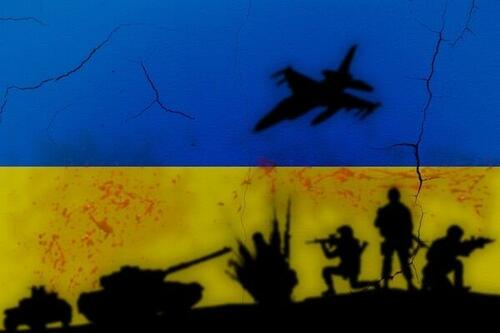

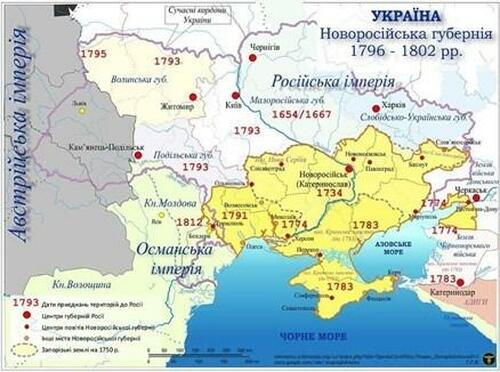
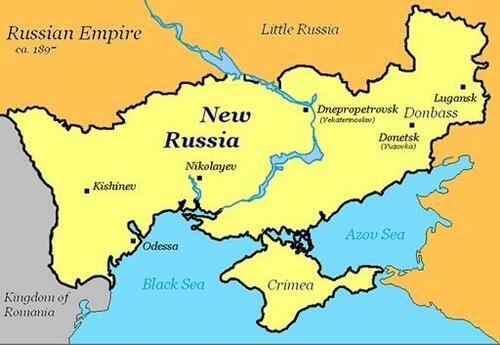
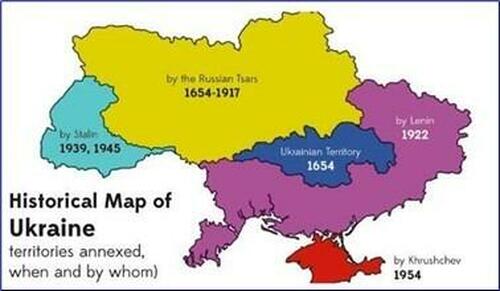
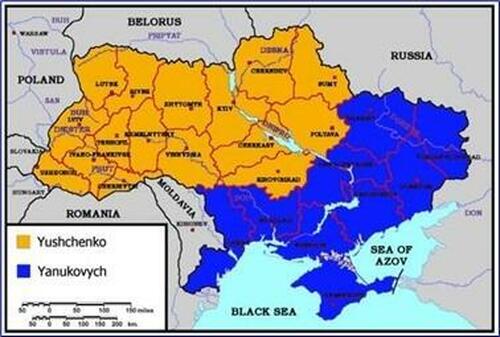
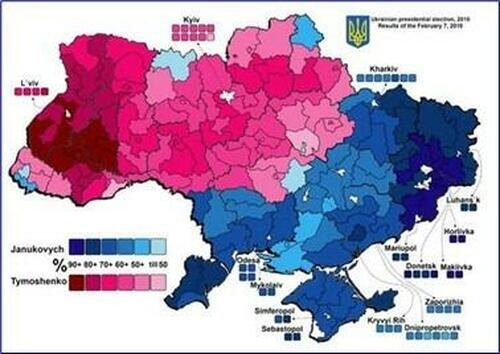


0 comments
Post a Comment